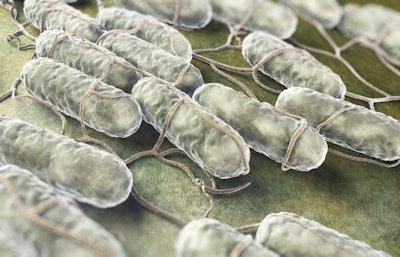
Integrators and growers can combat foodborne Salmonella infections by targeting and eliminating the most harmful strains for human health.
As part of the International Production & Processing Expo (IPPE) in Atlanta, Dr. Bill Potter, Elanco Animal Health’s food safety technical advisor, gave a Tech Talk on strategies to reduce Salmonella colonization in broilers. He spoke on January 24, 2023.
1. Focus on the most virulent strains
Potter said the U.S. Department of Agriculture identified three main Salmonella serotypes of concern for human health: Enteritidis, Typhimurium and Infantis. The agency is overhauling the way it approaches Salmonella regulation with a greater focus on controlling the most virulent pathogens and on pre-harvest controls.
These serotypes are rightly identified as areas of concern because they cause more than 30% of foodborne illnesses, he said. By reducing the presence of those pathogens, the risk of human illness is greatly reduced.
2. Try new vaccine technologies
Potter said developing vaccines made with live Salmonella bacteria and autogenous vaccines crafted particularly for combatting the disease. Autogenous vaccines are prepared by isolating and destroying microorganisms in infected birds and used to provide immunity the same flock.
Vaccines are available to combat the most dangerous Salmonella strains.
3. Combat colonization
The goal of a vaccination program, according to Potter, is to reduce overall Salmonella colonization inside the bird. He said researchers are closely studying how vaccine programs can provide cross protection for the birds.
The results are showing by using live Salmonella Typhimurium vaccines, and by using a live Salmonella Typhimurium in combination with a live Salmonella Enteritidis vaccine, greater cross protection from the three key Salmonella serotypes is established. This is especially true with layers.
4. Use an all-around approach
Potter pointed to what Elanco Animal Health calls a 360 degree approach to Salmonella reduction.
Along with vaccines, integrators and growers must work together to establish intestinal integrity programs, apply the proper nutritional supplements, implement the best poultry house practices and combat pest infestations.
5. Use multiple monitoring methods
The only way to ensure Salmonella programs are working is by tracking and charting the results and comparing how they change over time.
Potter recommending using a combination of serotype quantification and qualitative modeling to monitor progress.
















